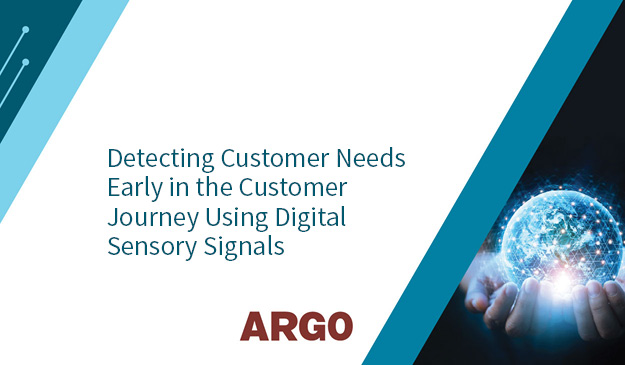Digital sensory detects signals such as website navigation, time-on-page, issue and error detection, and other monitored activities and events. It analyzes these signals to rapidly respond and provide relevant and timely information and offers to customers to help meet their identified needs, as well as issue resolution to enhance customer experience. Looking specifically at lead generation, it utilizes signals related to customer needs and intent as derived from digital behavior.
Digital sensory:
- Detects—From the first time a user visits the institution’s website, digital sensory detects and identifies the user to track their behavior with respect to navigation and time-on-page, content engagement, and product interest. These signals communicate consumer interest and needs;
- Quantifies—Intelligent marketing quantifies these signals to provide a measure of their propensity-to-purchase;
- Responds—When the propensity score reaches a configured threshold, relevant and timely customer engagement deploys through various methods and media based on preferences, segmentation, and complexity.
Digital sensory creates a prospect record at the initial website detection. The Customer Data Platform captures and associates all subsequent events to ensure transparency in institutional knowledge while providing a 360-degree view of the customer.
Events captured through event tracking create valuable lead generation and relationship expansion opportunities. Examples include:
- Onboarding processes accumulate information about the consumer or business used by the banker to explore future growth;
- Campaign responses contribute measurable feedback used to quantify overall relationship health and identify interests and needs;
- Service events, such as change in marital status or address, alert the institution to expansion opportunities and critical attrition risk;
- Survey feedback, both positive and negative, inform the institution of customer satisfaction and, when taken in aggregate, contribute to optimization in areas such as campaigns, branch and contact center service, workflow, website intuitiveness, and overall customer experience;
- Human interaction allows branch and contact center staff to ask the right questions to understand customer needs.
For more information, download the "Creating New Digital Revenue Streams through Customer Acquisition and Relationship Expansion" interview with David Engebos, President and COO of ARGO.





